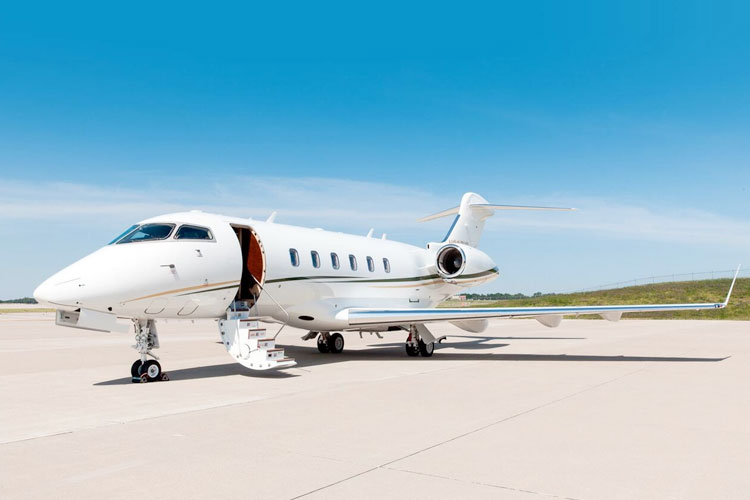The Rise Of Charter Air Providers: A Comprehensive Analysis
페이지 정보
작성자 Andre 작성일25-08-17 00:37 조회2회 댓글0건본문
Charter air providers have emerged as a big component of the aviation trade, reworking the way in which individuals and businesses strategy air travel. In contrast to conventional commercial airlines, which operate on fastened schedules and routes, charter services present flexible, on-demand air travel options tailored to the particular needs of their clients. This article explores the evolution of charter air companies, their operational dynamics, financial implications, environmental concerns, and the long run outlook of this burgeoning sector.

Evolution of Charter Air Providers
The idea of charter air journey dates again to the early 20th century, with the primary recorded charter flight occurring in the 1920s. Initially, these companies catered primarily to affluent individuals and companies requiring bespoke travel options. Over the a long time, advancements in aviation know-how, coupled with growing world connectivity, have expanded the reach and accessibility of charter companies.
The deregulation of the airline industry within the United States in the late 1970s marked a pivotal moment for charter air providers. This deregulation allowed for elevated competition and spurred the growth of quite a few charter firms. Consequently, the market diversified, with operators offering a variety of aircraft types, from small jets to giant airliners, able to accommodating various passenger capacities and journey wants.
Operational Dynamics
Charter air services function under a distinct business model in comparison with commercial airways. Clients can e book flights on an ad-hoc basis, allowing for greater flexibility by way of departure occasions, locations, and aircraft selection. This mannequin appeals to a diverse clientele, together with corporate travelers, sports activities teams, families, and even medical transport providers.
Key operational features of charter air services include:
- On-Demand Scheduling: Purchasers can schedule flights in line with their convenience, typically with minimal lead time. This flexibility is particularly advantageous for business travelers who might require last-minute journey preparations.
- Number of Aircraft: Charter corporations often have access to a various fleet of aircraft, ranging from turboprops to private jets and larger airliners. This variety enables purchasers to choose the most suitable aircraft based mostly on their particular wants, including passenger depend, distance, and funds.
- Customized Services: Charter services sometimes supply a higher stage of customer service compared to commercial airways. Clients can expect tailor-made experiences, together with in-flight catering, ground transportation preparations, and personalized itineraries.
- Access to Distant Locations: Charter flights can operate to and from airports that may not be serviced by commercial airways, offering access to distant or underserved locations. This capability is particularly helpful for industries such as mining, oil, and tourism.
Economic Implications
The charter air service trade contributes considerably to the worldwide financial system. According to industry studies, the global charter market was valued at approximately $20 billion in 2020, with expectations for continued development driven by rising demand for private and versatile air journey.
Several elements contribute to the economic viability of charter air companies:
- Value-Effectiveness: For teams of travelers, charter flights can typically be extra value-efficient than buying a number of commercial airline tickets. Additionally, companies can save on travel bills by avoiding delays and layovers associated with commercial flights.
- Business Productivity: Charter air providers allow companies to maximise productivity by minimizing journey time. Executives can conduct meetings en route, making better use of their time and resources.
- Job Creation: The expansion of the charter air sector has led to job creation across varied domains, including pilots, crew members, maintenance personnel, and administrative staff.
Environmental Issues
As the aviation trade faces growing scrutiny over its environmental impact, charter air companies are usually not exempt from these considerations. In case you liked this article as well as you would want to acquire more information about Affordable private jet charter companies kindly check out the webpage. The carbon footprint of air journey is significant, and affordable private jet charter companies the charter sector must navigate the challenges of sustainability.
However, there are several initiatives and technologies being explored to mitigate the environmental impression of charter flights:
- Gasoline Effectivity: Many charter operators are investing in newer, extra gasoline-environment friendly aircraft that produce fewer emissions per passenger. The adoption of advanced aerodynamics and lightweight supplies also can contribute to improved gasoline effectivity.
- Sustainable Aviation Fuels (SAFs): The use of SAFs is gaining traction within the aviation industry. These fuels are derived from renewable sources and may considerably cut back greenhouse gas emissions compared to conventional jet fuels.
- Carbon Offsetting: Some charter corporations offer carbon offset programs, allowing clients to compensate for his or her flight emissions by investing in environmental initiatives, similar to reforestation or renewable power initiatives.
The future Outlook
The future of charter air companies appears promising, driven by evolving client preferences and technological advancements. A number of developments are shaping the business panorama:
- Elevated Demand for Private Travel: The COVID-19 pandemic has accelerated the shift towards private air travel, as people seek safer and more controlled journey environments. This development is predicted to proceed as more travelers prioritize well being and security.
- Technological Improvements: The combination of expertise within the charter booking process is enhancing buyer experiences. On-line platforms and cellular applications are streamlining the booking process, making it easier for purchasers to entry charter companies.
- Emergence of Electric Aircraft: The development of electric and hybrid-electric aircraft presents a chance for the charter trade to reduce its environmental footprint. As these applied sciences mature, they might revolutionize the way charter flights operate.
- Regulatory Developments: As the industry grows, regulatory frameworks will evolve to address security, security, and environmental issues. Charter operators might want to adapt to these adjustments to stay compliant and aggressive.
Conclusion
Charter air companies characterize a dynamic and evolving sector within the aviation trade. With their flexibility, customized service, and means to access distant locations, they cater to a various clientele and play a vital role in each private and enterprise travel. As the business navigates economic and environmental challenges, the way forward for charter air companies seems to be vibrant, pushed by innovation and changing client preferences. The continued development of this sector will undoubtedly shape the way forward for air journey, offering new alternatives and experiences for travelers worldwide.

댓글목록
등록된 댓글이 없습니다.














